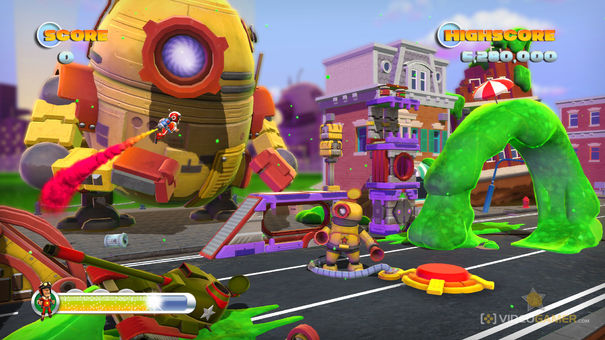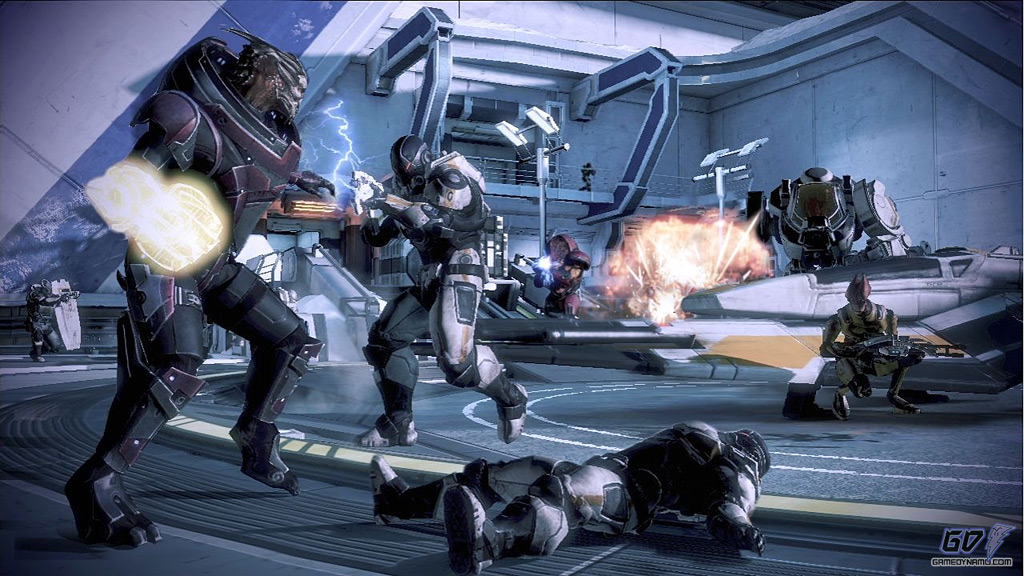Marvel Vs. Capcom 3 – Fundamentals: Guarding
While it may seem silly to write a guide on how to use guarding, it is a much more precise art than most would give it credit. It is also important to understand how and when to use Advancing Guard inside a match. Some people can go an entire match without blocking once while others will turtle and block almost every hit that comes their way, lashing out with counters.
At its core, blocking or guarding is a very fundamental skill that anyone can improve on. Doing so will help them improve their overall skill and increase their survivability in the more intense online matches. Mix with proper usage and timing of advancing guard and you will find yourself winning a few more matches. It is important to note that Marvel Vs. Capcom 3 lacks proximity blocking. This is where the character will guard regardless of where the attack is. Characters will only go into their block animation when they are threatened.
Guarding does one thing best, reduce incoming damage. Any hit's damage will be reduced to 30% of what it would have been. You will also take chip damage, noted by the red portion of your character's health bar. This damage can be healed over time while the character is waiting as an ally to assist you.
There are three forms of basic guarding that you have at your disposal, Air, Standing and Crouch or Air, Mid and Low.
Air Guarding – Done while airborne, hold away from opponent's point character. This will let your character defend in the air against attacks directed at them. They will still be vulnerable to air-throws.
Standing Guard (Mid Blocking) – The most common guard. Many special attacks will be coming in this range. It will block High and Mid level attacks that come at your character. It is vulnerable to throws and low attacks. You simply hold away from your opponent's character.
Crouching Guard (Low Blocking) – The second most common guard. This will defend against mid and low attacks. While low attacks are not very common, most seasoned players will mix up the level their attacks are coming in at. This guard is vulnerable to high attacks and throws. You simply need to crouch and hold away from your opponent's character.
Active Blocking
This is something that stands throughout a number of fighting games, but not all of them have it. Once a continuous chain attack, like a hyper combo, is blocked, the character will automatically block for the rest of the attack without you having to hold away for the whole time. Do note this will not work against standard combo attacks.
Crossover Assist
This is an option while you are using a Standing or Crouching Guard. While your character is in their guard animation and you have at least one hyper gauge charge, it is possible to quickly switch out your active character. To do so, push toward your opponent then hit the switch button for the character you want to change to. This will consume a hyper gauge and send them out. The new character will immediately unleash a special move. The advantage to this set-up is that it is possible to use a X-Factor cancel and throw out something even more devastating. This allows you to change out a character who has taken a lot of chip damage in the face of an assault and possibly change the direction of the push.
Advancing Guard
An Advancing Guard is helpful for characters who need more space to work than their opponent's are allowing them. While your character is guarding, simply hit two of the attack buttons and they will send your opponent away from you a ways. This is also helpful to reduce incoming chip damage as well. It is a great way to gain some space quick for you to use to set up your retaliatory strike! Be careful as this does the same for your opponent and in some cases, the opponent's character may be able to quickly recover from the Advancing Guard. This is a case-by-case technique.






 Best Space Games for PC
Best Space Games for PC FIFA 12: Fast Exp For Be A Pro
FIFA 12: Fast Exp For Be A Pro The best downloadable games on their way to consoles
The best downloadable games on their way to consoles Mass Effect 3 Multiplayer Guide: Classes, Games, Opponents, Unlockables, etc.
Mass Effect 3 Multiplayer Guide: Classes, Games, Opponents, Unlockables, etc. How to Improve at FIFA 16
How to Improve at FIFA 16